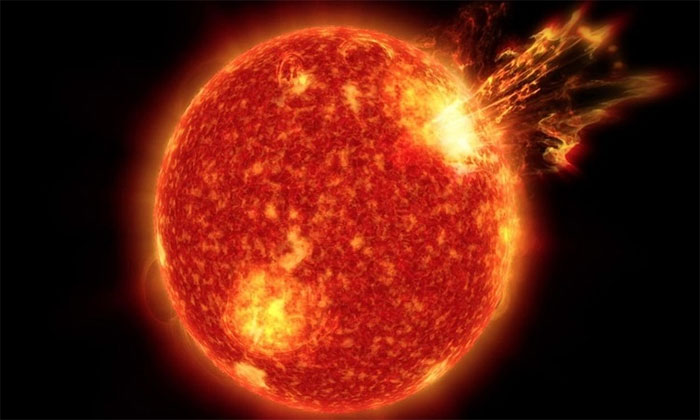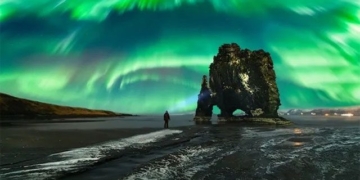Timelapse video by an American photographer captures two intense solar flares on the surface of the Sun.
Astronomical photographer Andrew McCarthy from Arizona, USA, created a video featuring two solar flares from one million images taken of the Sun using a special telescope. According to McCarthy, the larger flare ejected material over a distance of 241,400 kilometers, a distance sufficient to stack 19 Earths on top of each other.

Two solar flares as seen from Earth.
Solar flares are massive eruptions of magnetic energy occurring in a region of the Sun’s atmosphere, emitting electromagnetic radiation such as X-rays, visible light, and ultraviolet rays. Strong flares can release high-energy particles towards Earth, posing a threat to satellites and creating brilliant auroras as these particles are guided towards the poles by Earth’s magnetic field.
However, in this case, the two flares lasted 5 to 10 minutes and were directed away from Earth, so they did not affect our planet. Although the timelapse video compiled from images taken on April 30, 2022, lasts only about 30 seconds, it actually reflects the Sun’s activity over a span of 7 hours. The telescope McCarthy used was modified with a special filter to safely observe the Sun and examine the details of the star’s atmosphere.
Solar activity follows an 11-year cycle, marked by periods of high and low activity known as solar maximum and solar minimum. During solar maximum, the number of sunspots increases, and the impact of space weather on the environment around Earth is often more significant. Sunspots are temporary dark areas that rise on the surface of the Sun with particularly strong magnetic fields. They are typically associated with solar flares and various other types of eruptions, such as coronal mass ejections. Currently, the Sun is beginning to show increased activity as it prepares to end the solar minimum phase and enter the solar maximum phase.
(Video: Andrew McCarthy)


















































